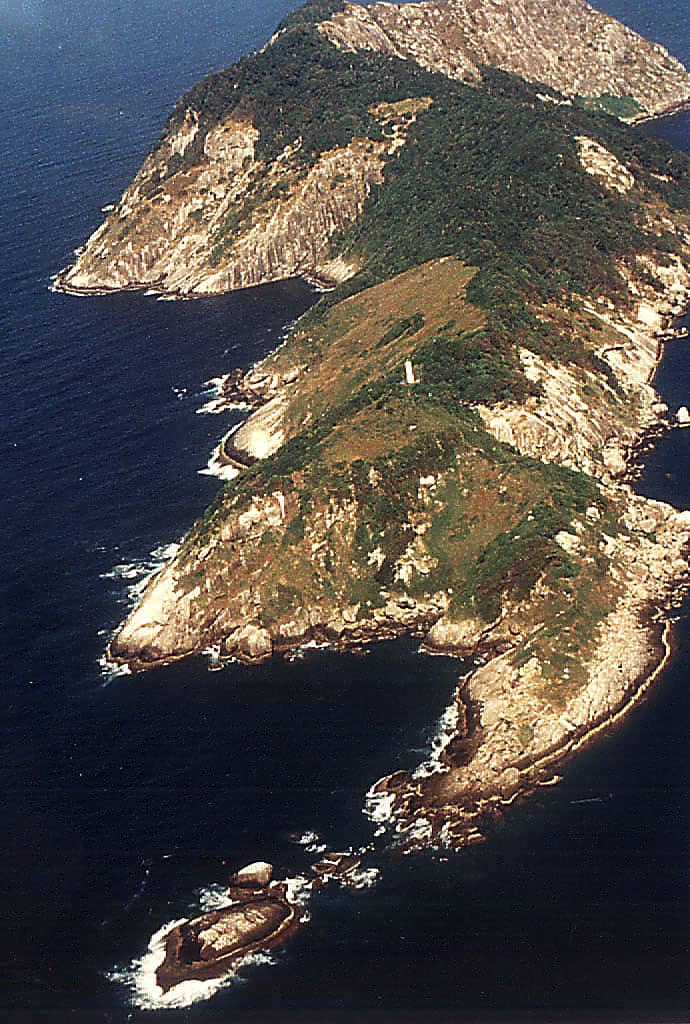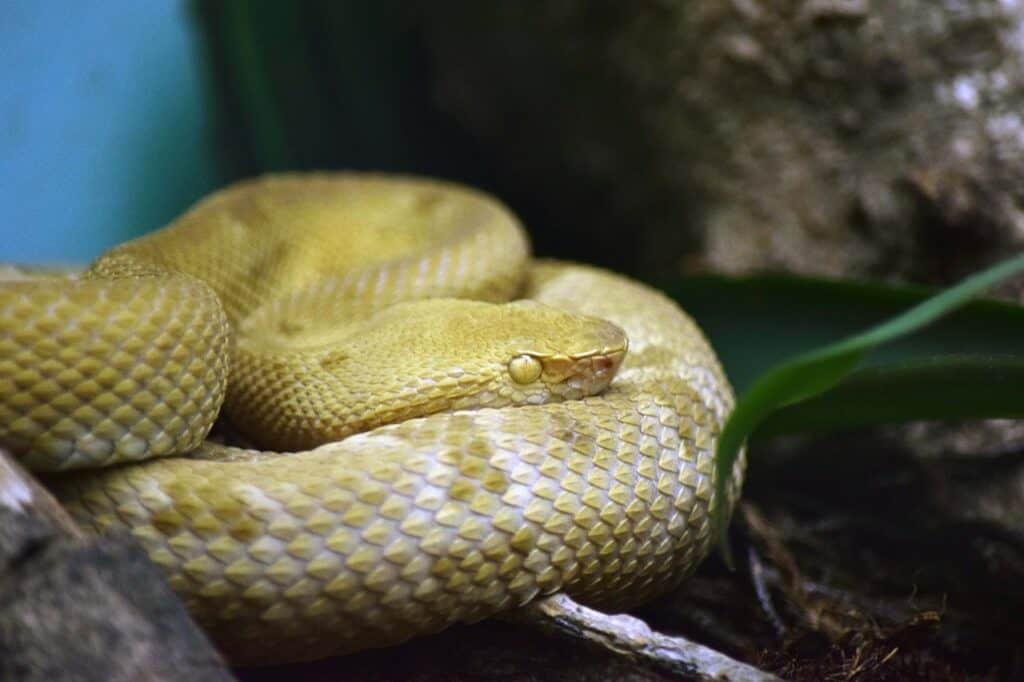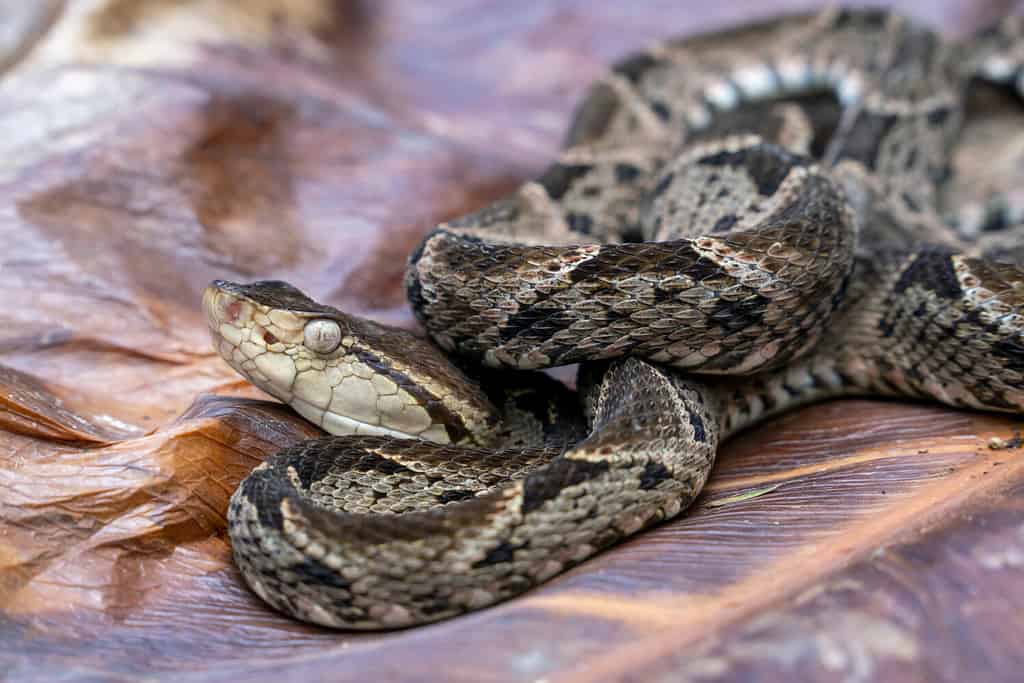Key Points:
- The only inhabitants of “Snake Island,” which is around 21 miles off the coast of Sao Paolo in Brazil, are thousands of snakes, beetles, cockroaches, locusts, and birds.
- Modern-day pirates seek out the golden lancehead snake, which fetches upwards of $30,000 on the black market. The venom is highly desired by scientists and pharmaceutical companies.
- The golden lancehead vipers on Snake Island evolved so that their venom can incapacitate birds before they are able to fly away.
If you haven’t heard about “Snake Island” yet, it’s about time you did. Located roughly 21 miles off the coast of Sao Paolo, Brazil is an island full of, you guessed it: snakes! But why do people seek out Snake Island, and what makes the snakes living on it so special?
In this article, we will discuss everything you need to know about Snake Island, including why it is important and the struggles people go through just to visit it. Most importantly, you’ll also learn why its snakes fetch up to $30,000 on the black market!
What Is “Snake Island”?

An overhead view of “Snake Island,” which is also known as Ilha da Quimada Grande.
©Prefeitura Municipal de Itanhaém / Creative Commons – Original / License
Also known as Ilha da Queimada Grande, Snake Island is an uninhabitable spit of land off the Brazilian coastline. The island itself is a little over 100 acres, making it fairly small in the grand scheme of things. However, every square inch of this island is populated by bugs, birds, and, of course, snakes.
There’s some interesting history of how the island became so overrun with snakes and bugs. Scientists say that 11,000 years ago, at the end of the last Ice Age, sea levels rose due to global warming, and this island, once a part of the continent of Brazil, had high elevations that were not covered in ocean. However, over time this piece of land broke off from the mainland and drifted 90 miles out, trapping the snakes and bugs. As there was plenty for the snakes to eat, and no predators taking them out, they multiplied and essentially took over the island.
Snake Island also features an automated lighthouse that needs annual repairs, despite the obvious dangers present on the island. The only other people entering this dangerous location are researchers determined to study the unique ecosystem and modern-day pirates. But why do pirates risk their lives to bring back any “treasure” from Snake Island?
Well, let’s talk about that now.
Why Do People Want Snakes From Snake Island?

The snakes on Snake Island are among the deadliest snakes in the world.
The reason people risk everything to bring snakes back from Snake Island is simple: there’s a huge payday involved. The snakes living on Snake Island are so unique that a single snake will fetch modern-day pirates up to $30,000. When you consider just how many snakes there are on the island, you can only imagine that’s enough of a reason for people to venture forth.
The amount of money that pirates can earn from a single snake is so high because of pharmaceutical and scientific demand. Yep, these snakes possess a venom that is rumored to be valuable for a wide variety of health purposes, such as cancer research, heart health, and more. There’s something about this venom, and pharmaceutical companies will pay top dollar to find out why.
However, visiting the island is only legally possible through special permission from the Brazilian government. Any scientific research on the island must be authorized, and every researcher must be accompanied by a doctor. Why? Because of how deadly the snakes are in this isolated location.
But what snake could possibly be so deadly?!
What Animals Live on Snake Island?

Golden lancehead vipers evolved to have extremely potent venom.
You will find a variety of terrifying beetles, cockroaches, and locusts on the island — some as unique as the island itself. There is also a nonvenomous species of snake located here as well, known as the Sauvage’s snail-eater. But this isn’t the snake that modern-day pirates seek out.
The snake that is responsible for all of this hubbub? The golden lancehead, a pit viper and a member of the Bothrops genus. This snake lives on this island and this island alone, but it is not the only type of lancehead viper alive in the world. In fact, mainland lancehead snakes are responsible for the majority of snakebites in Brazil — approximately 90%.
There is a reported one golden lancehead per square meter on Snake Island. Their venom is potent enough to kill a human within hours. This is likely an adaptation that these snakes have undergone so that they can incapacitate and eat seabirds before they fly away. There aren’t many other food sources readily available on such an isolated landmass, but these snakes have adapted to survive in these conditions, which is something their mainland counterparts don’t share.
The golden lancehead reaches nearly half a meter in length. There are anywhere from 2,000 to 5,000 snakes on the island, which is why exploring the region is so dangerous. However, this is also why pirates risk everything to capture some of these snakes. But what else makes this place so dangerous?
Why Is Snake Island So Dangerous?

The venom of snakes from Snake Island works very quickly, leaving little time to get back to the mainland and receive antivenom.
Snake Island is so dangerous for a number of reasons. Not only are there thousands of golden lancehead vipers in a 100 acre radius, you have an island covered in unmanaged terrain. If you were to visit, you would face uneven stone steps, thick and tall underbrush, and forested regions absolutely packed with snakes.
Plus, even if you have a doctor with you, you run a huge risk should a golden lancehead bite you. Considering the fact that you are almost 20 miles from Brazil’s coastline, this means you are a long boat ride from a hospital. And golden lancehead venom works quickly — this is how these snakes have adapted to survive in this isolated area, after all!
Pirates and researchers bitten on the island never reach the mainland. At least, not according to the Brazilian government. This is because it takes an average of eight hours by boat to return to a port in Brazil. Golden lancehead venom kills within hours, shutting down the central nervous system with ease.
However, if you manage to capture a few golden lanceheads without getting bitten or falling down sheer cliff faces, you can expect a pretty nice payday. You also risk getting arrested by the Brazilian Navy because you are breaking the law. But apparently, this is not something that concerns modern-day pirates!
Golden Lancehead vs. Fer-De-Lance
How exactly does the golden lancehead compare to the fer-de-lance (or common lancehead)? In terms of toxicity, the venom of the golden lancehead attacks red blood cells, causing tissue damage. This venom has a high absorption rate, and the bite of a golden lancehead emits enough venom to kill 10 humans.
Surprisingly, the venom of the fer-de-lance is more potent. While the venom attacks muscle tissue, this snake is responsible for the most deaths in its range with venom able to kill up to 30 humans in one bite.
While the golden lancehead is only found on Snake Island, the fer-de-lance has a wide distribution in South American countries such as Honduras, Mexico, and Costa Rica. Its habitat includes grasslands, rainforests, farmlands, and coastal areas. As Snake Island is guarded against visitors, the fer-de-lance is responsible for more deaths than the golden lancehead: 40% and 70% of all snakebites in its range.
Other differences between a golden lancehead and a fer-de-lance are their sizes and colorations. The golden lancehead is yellow and tan, reaching up to 4 feet in length, while the fer-de-lance is a brown or olive snake that measures up to 5.9 feet in length.
Due to their habitat, the fer-de-lance has a broader diet, feasting on many types of insects, eels, rabbits, and crayfish. Whereas the hemotoxic venom of the golden lancehead is specialized to help it attack migratory birds, but these snakes will also eat lizards and even other snakes on the island.

The fer-de-lance snake has a deadlier venom than the golden lancehead and is responsible for more human deaths.
©Mark_Kostich/Shutterstock.com
Finding the Golden Lancehead off of Snake Island
If you are interested in seeing a golden lancehead in person, you don’t need to travel to Snake Island to do so. In fact, please don’t! Instead, check out a variety of zoos and reptile houses in Brazil. Some locations have safely secured golden lanceheads for study and tourist viewing.
However, the golden lancehead is only found in the wild on Snake Island. You don’t have to worry about encountering this fearsome viper anywhere else. No matter how fascinating these vipers are, there’s no reason for anyone to visit Snake Island, including pirates hoping for a payday!
Another “Snake Island” Makes the News
There’s another island that bears the same moniker, located in the Black Sea off the coast of Ukraine, which is currently making headlines. When Russia first began its assault on the neighboring country in 2022, it seized Snake Island because of its proximity to Odessa, a key port city. When Russian forces retreated from the island, Ukrainian forces responded by sending a special diving team in underwater vehicles to the island. Once there, they were joined by a larger group to survey what equipment may have been left behind. As a gesture of defiance towards the enemy, they left behind multiple Ukrainian flags.
So how did this particular “Snake Island” (also called “Serpent Island” and “White Island”) get its name? According to ancient Greek legend, the hero Achilles was buried on Snake Island after his ankle was shot through by an arrow at Troy. Achilles’s ghost was said to have haunted the island, raising a powerful herd of mares that would one day take down the Amazons.
There are indeed temple ruins on Snake Island, and legend also states that one temple was infested with white snakes. Whatever the case, this island is not snake-infested — in fact, there are no snakes on the island whatsoever. But the surrounding waters teem with 50 species of fish and six species of crab, some of which have been listed as endangered.
The photo featured at the top of this post is ©
Discover the "Monster" Snake 5X Bigger than an Anaconda
Every day A-Z Animals sends out some of the most incredible facts in the world from our free newsletter. Want to discover the 10 most beautiful snakes in the world, a "snake island" where you're never more than 3 feet from danger, or a "monster" snake 5X larger than an anaconda? Then sign up right now and you'll start receiving our daily newsletter absolutely free.
Thank you for reading! Have some feedback for us? Contact the AZ Animals editorial team.







